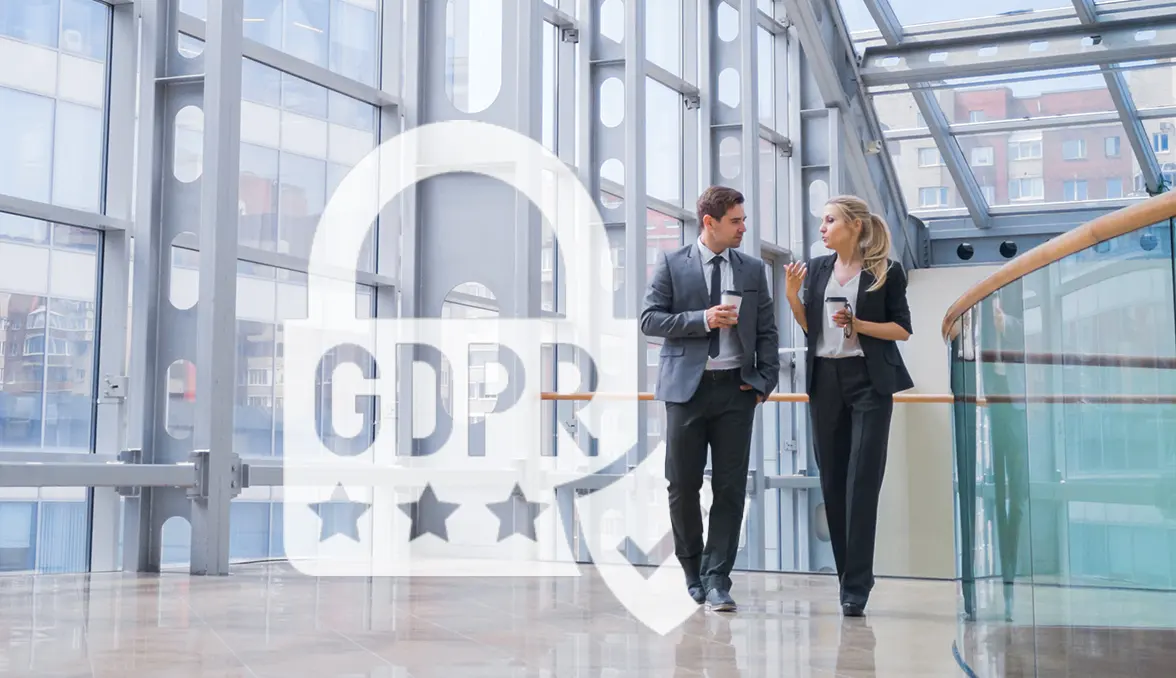Visitor registration is an essential practice for many companies, but collecting and managing personal data involves a series of legal obligations, in particular with reference to the General Data Protection Regulation (GDPR).
Ignoring these rules not only exposes the company to sanctions, but can also undermine the trust of customers and partners.
Let’s find out together what are the main rules to respect and how to implement them correctly.
Why GDPR is crucial in visitor registration
The GDPR was created to protect personal data and ensure that it is processed in a transparent, secure and responsible manner.
When a visitor enters the company and registers their data, even apparently simple information such as name, surname, contact details or reason for the visit falls under the definition of personal data.
If this data is not collected and managed in a compliant manner, the company may face:
- Administrative penalties: Fine of up to 4% of the global annual turnover or €20 million, whichever is higher.
- Reputational damage: Loss of trust from customers and partners.
- Operational risks: Interrupted or ineffective processes due to insecure data management.
The essential rules to follow
To ensure that visitor registration is GDPR compliant, it is essential to follow a few key rules.
These not only ensure the protection of personal data, but also help to build a transparent and professional process that protects both the company and visitors.
Here are the main rules to follow:
1. Transparency in data collection
Each visitor must be clearly informed about:
- What data is collected.
- Why it is collected (e.g. security reasons, attendance tracking).
- How it will be used and stored.
- How long it will be stored.
It is mandatory to provide an easily accessible and understandable privacy policy, for example on a tablet, totem or printed near the registration point.
2. Explicit consent
Consent to the processing of personal data must be:
- Clear and specific: The visitor must know exactly what he is consenting to.
- Documentable: The company must be able to demonstrate that consent has been obtained.
- Revocable: The visitor must have the right to withdraw consent at any time.
3. Data Security
Personal data must be protected from:
- Unauthorized access: Only authorized personnel can access the information.
- Accidental loss: Backups and encryption systems are essential.
- Public exposure: Avoid paper records visible to all, where a visitor’s data can be read by anyone.
4. Limited data retention
The GDPR requires that personal data be retained only for as long as strictly necessary for its purpose. For example:
- A security recording can be deleted at the end of the visit.
- Data collected for statistical purposes must be anonymized.
5. Right of access and deletion
Visitors have the right to:
- Access your data: Ask what information has been collected and how it is used.
- Request deletion of data: When it is no longer necessary for the original purpose or when consent is withdrawn.
Are you looking for a solution?
Take a look at Kiosk Varco, the versatile and limitless platform that guarantees you maximum functionality and regulatory security
What Happens If You Don’t Comply with GDPR
Not complying with GDPR rules isn’t just a regulatory violation, it can also have serious consequences for your business’s reputation and operations.
The implications go far beyond financial penalties, impacting visitor trust and your business’s ability to operate safely and effectively.
Here’s what you could face:
- Significant financial penalties: Fines can vary depending on the severity of the violation.
- Loss of trust: Visitors may feel unsafe sharing their data, damaging your business reputation.
- Legal implications: Complaints and litigation can lead to additional costs and complications.
Examples of Common Mistakes
Avoiding mistakes in visitor data management is essential to GDPR compliance and maintaining a professional image.
However, many companies continue to make mistakes that can turn into significant breaches, both legally and operationally.
Here are some common examples to avoid:
- Exposed paper logs: A log where each visitor writes their data is visible to anyone and does not guarantee privacy.
- Missing or incomplete disclosures: Failure to explain how the data collected will be used can constitute a direct breach.
- Excessive retention: Retaining visitors’ personal data for months or years without valid justification.
Best practices for GDPR compliance
Adopting best practices for GDPR compliance is not only a responsible choice, but an investment in the security and reputation of your company.
Implementing adequate procedures and tools ensures effective data management, compliant with regulations and capable of building trust in visitors.
Here are some useful tips to always remain compliant:
- Automate the registration process: Use digital systems that collect data securely and comply with regulations.
- Provide clear information: Make sure that each visitor can read and understand how their data will be used.
- Regularly update company policies: Verify that data collection and retention practices are always compliant with GDPR.
Conclusion
Visitor registration is not only an operational issue, but an opportunity to demonstrate transparency, security and professionalism.
Complying with GDPR is not only a legal obligation, but also a strategy to build trust with customers and partners.
Investing in compliant and secure solutions is the first step to protect your company and the personal data of those who visit it.
👉 For a complete overview on the topic, visit our main guide to digital visitor registration.
 | Do you want to manage visitor registration in a GDPR compliant way?With a system like Kiosk Varco, reception is not only an operational aspect, but also GDPR Compliant. |
 |
Do you want to manage visitor registration in way GDPR Compliant?With a system like Kiosk Varco, reception is not just an operational aspect, but also GDPR Compliant.
|



